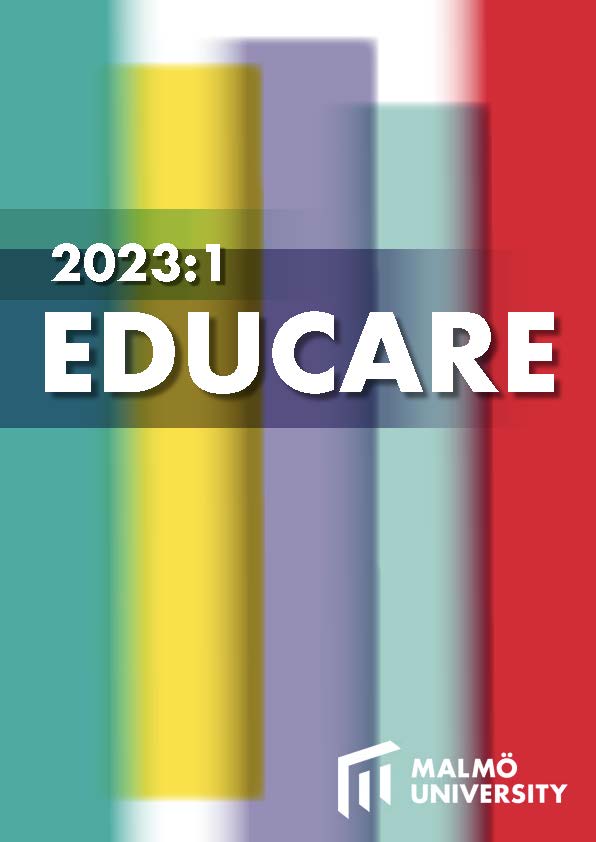Beläggsmodellen i svenska nationella prov
Exemplet Religionskunskap årskurs 9
DOI:
https://doi.org/10.24834/educare.2023.1.698Keywords:
Beläggsmodell, Nationella prov, BetygssystemAbstract
In the Swedish national tests, the so-called “Beläggsmodell” is used to generate test grades in seven school subjects. This article examines the origin and effects of the “Beläggsmodell” on test scores in one of these subjects, Religious studies. Classical methods for evaluating the quality of tests are used in combination with confirmatory factor analysis. The results show that the tests have a reliability above 0.92 and that the “Beläggsmodell” reduces this in unpredictable ways for individual students. Confirmatory factor analysis shows that the tests are mainly one-dimensional, which has the consequence that the “Beläggsmodell” does not fulfill any meaningful function. Instead, it has major consequences for different students' test grades. There are examples of students who at the same total score on the test receive everything from D to A as a test grade. The large differences arise through differences in performance on a very small number of items. If, instead, the total sum is used as a basis for generating test grades, the possibilities for fair and equivalent test grades increase, as shown by examples. Responsible authorities should as soon as possible consider switching to a system where the total sum points is the basis for the test grades.
References
Bach, F., Frändberg, B., Hagman, M., West, E., & Zetterqvist, A. (2019). Att betygsätta elevers kunskaper – möjligheter och begränsningar. Nordic Studies in Science Education, 15(2, 2), 159–173. https://doi.org/10.5617/nordina.5896
Bårman, K., Nyström, P., Rask, L., & Åström, M. (2010). Ämnesproven i biologi, fysik och kemi i årskurs 9. https://www.skolverket.se/publikationsserier/ovrigt-material/2010/amnesproven-i-biologi-fysik-och-kemi-i-arskurs-9.
Beaujean, A. A. (2014). Latent Variable Modeling Using R (1 edition). Routledge.
Beck, C. W. (2013). Jakten på kritisk pedagogikk. Norsk pedagogisk tidsskrift, 97(04-05), 304–314. https://doi.org/10.18261/ISSN1504-2987-2013-04-05-06
Brandén, H. (2016). Kritisk Realism. Linköping University Electronic Press. http://urn.kb.se/resolve?urn=urn:nbn:se:liu:diva-131613
Brown, T. A. (2015). Confirmatory Factor Analysis for Applied Research (Second edition.). The Guilford Press.
Crocker, L., & Algina, J. (2008). Introduction to Classical and Modern Test Theory. Cengage Learning.
Epskamp, S. (2019). semPlot: Path Diagrams and Visual Analysis of Various SEM Packages’ Output. https://CRAN.R-project.org/package=semPlot
Grelsson, G., Bergqvist, G., & Jacobsson, N. (2013). Nya kursprov i biologi och kemi för gymnasiesko-lan : bakgrund och resultat. Umeå universitet. http://urn.kb.se/resolve?urn=urn:nbn:se:umu:diva-80253
Gustafsson, J.-E. (2008). Effects of International Comparative Studies on Educational Quality on the Quality of Educational Research. European Educational Research Journal, 7(1), 1–17. https://doi.org/10.2304/eerj.2008.7.1.1
Gustafsson, J.-E., Cliffordsson, C., & Erickson, G. (2014). Likvärdig kunskapsbedömning i och av den svenska skolan – problem och möjligheter (s. 120). SNS - Studieförbundet Näringsliv och Sam-hälle. https://www.sns.se/aktuellt/likvardig-kunskapsbedomning-i-och-av-den-svenska-skolan-problem-och-mojligheter/
Hu, L., & Bentler, P. M. (1999). Cutoff Criteria for Fit Indexes in Covariance Structure Analy-sis: Conventional Criteria versus New Alternatives. Structural Equation Modeling: A Multidisci-plinary Journal, 6(1), 1–55. https://doi.org/10.1080/10705519909540118
Hylmö, A. (2007). Från ontologi till ideologi: en undersökning av den kritiska realismen som sociologisk vetenskapsteori. http://lup.lub.lu.se/student-papers/record/1322761
Jiang, G., & Mai, Y. (2021). equaltestMI: Examine Measurement Invariance via Equivalence Testing and Projection Method. https://CRAN.R-project.org/package=equaltestMI
Jorgensen, T. D., Pornprasertmanit, S., Schoemann, A. M., & Rosseel, Y. (2020). semTools: Use-ful tools for structural equation modeling. https://CRAN.R-project.org/package=semTools
Kane, M. T. (2013). Validating the Interpretations and Uses of Test Scores. Journal of Educational Measurement, 50(1), 1–73. https://doi.org/10.1111/jedm.12000
Kane, M. T. (2016). Explicating Validity. Assessment in Education: Principles, Policy & Practice, 23(2), 198–211. https://doi.org/10.1080/0969594X.2015.1060192
Lindberg, V., Eriksson, I., & Pettersson, A. (2019). Formativ bedömning – utmaningar för undervisningen : en inramning. I Formativ bedömning – utmaningar för undervisningen (s. 9–16). Natur och kultur. http://urn.kb.se/resolve?urn=urn:nbn:se:su:diva-173353
Lindskog, A., & Wåke, C. (2020). Nationella Prov i Religionskunskap | Institutionen För Didaktik Och Pedagogisk Profession, Göteborgs Universitet. https://www.gu.se/didaktik-pedagogisk-profession/nationella-prov-i-religionskunskap#Nationella-prov-fr%C3%A5n-2013
Livingston, S. A. (2018). Test Reliability—Basic Concepts (RM-18-01; Researh Memorandum, s. 46). Educational Testing Service.
Loehlin, J. C. (2004). Latent Variable Models an Introduction to Factor, Path, and Structural Equation Analysis (4. ed.). Mahwah, N.J. : L. Erlbaum Associates.
Messick, S. (1989). Validity. I R. L. Linn (Red.), Educational Measurement (3:e uppl., s. 13–103). American Council on Education & Macmillan.
Meyer, P. (2010). Understanding Measurement: Reliability. Oxford University Press. http://books.google.com?id=x60lzuvWtRYC
R Core Team. (2020). R: A Language and Environment for Statistical Computing. R Foundation for Statistical Computing. https://www.R-project.org/
Revelle, W. (2020). psych: Procedures for Psychological, Psychometric, and Personality Rese-arch. Northwestern University. https://CRAN.R-project.org/package=psych
Robinson, D., Hayes, A., & Couch, S. (2020). broom: Convert Statistical Objects into Tidy Tibbles. https://CRAN.R-project.org/package=broom
Rosseel, Y. (2012). lavaan: An R Package for Structural Equation Modeling. Journal of Statistical Software, Articles, 48(2), 1–36. https://doi.org/10.18637/jss.v048.i02
RStudio Team. (2020). RStudio: Integrated Development Environment for R. RStudio, PBC. http://www.rstudio.com/
Skolverket. (2016). Betygsskalan Och Betygen B Och D. Skolverket. https://www.skolverket.se/publikationer?id=2953
Skolverket. (2020). Likvärdiga betyg och meritvärden. https://www.skolverket.se/publikationer?id=7582
Skolverket. (2017). Skolverkets systemramverk för nationella prov. Skolverket. https://www.skolverket.se/publikationer?id=3890
SOU 2020:43. (2020). Bygga, bedöma, betygssätta - betyg som bättre motsvarar elevers kun-skaper. SOU 2020: Betänkande från Betygsutredningen 2018 (U 2018:03).
Wickham, H., Averick, M., Bryan, J., Chang, W., McGowan, L. D., François, R., Grolemund, G., Hayes, A., Henry, L., Hester, J., Kuhn, M., Pedersen, T. L., Miller, E., Bache, S. M., Müller, K., Ooms, J., Robinson, D., Seidel, D. P., Spinu, V., … Yutani, H. (2019). Welcome to the Tidyverse. Journal of Open Source Software, 4(43), 1686. https://doi.org/10.21105/joss.01686
Wilson, M. (2005). Constructing Measures: An Item Response Modeling Approach (Har/Cdr). Routledge Academic.
Downloads
Published
How to Cite
Issue
Section
License
Copyright (c) 2023 Frank Dige Bach

This work is licensed under a Creative Commons Attribution-NonCommercial 4.0 International License.



